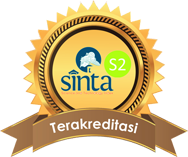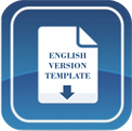The Development of an Affective Assessment Instrument Based on Creativity and Critical Thinking on Reaction Rate Material
DOI:
https://doi.org/10.15575/jtk.v8i1.25397Keywords:
affective, assessment instrument, the reaction rateAbstract
References
Bayrak, F. (2021). Investigation of the webbased selfassessment system based on assessment analytics in terms of perceived selfintervention. Technology, Knowledge and Learning, 27, 639-662. https://doi.org/10.1007/s10758-021-09511-8
Changwong, K., Sukkamart, A., & Sisan, B. (2018). Critical thinking skill development: Analysis of a new learning management model for Thai high schools. Journal of International Studies, 11(2), 37-48. doi:10.14254/2071-8330.2018/11-2/3
Chng, L. S., & Lund, J. (2018). Assessment for learning in physical education: the what, why and how. Journal of Physical Education, Recreation and Dance, 89(8), 29–34. https://doi.org/10.1080/07303084.2018.1503119
Dewi, N. L. R. A. (2021). Pengembangan instrumen asesmen keterampilan belajar dan berinovasi (4C) pada pembelajaran IPA siswa kelas V SD. Tesis. Universitas Pendidikan Ganesha.
Edwards-Schachter, M. (2018). The nature and variety of innovation. International Journal of Innovation Studies, 2, 65–79. doi:10.1016/j. ijis.2018.08.004
ErdoÄŸan, V. (2019). Integrating 4C Skills of 21st Century into 4 Language Skills in EFL Classes. International Journal of Education and Research, 7(11), 113-124. Retrieved from https://www.ijern.com/journal/2019/November-2019/09.pdf
Fathayati, S., Isnaeni, Wiwi., & Marianti, A. (2022). Scientific attitude assessment instruments using self-assessment in project-based learning development. Journal of Innovative Science Education, 11(1), 108–114. https://doi.org/10.15294/jise.v10i1.49985
Habiby, W. N & Sayekti, I. C. (2018). Pemenuhan hak anak dalam buku siswa kelas lima sekolah dasar Kurikulum 2013. Profesi Pendidikan Dasar, 3(2), 64. https://doi.org /10.23917/ppd.v3i2.4745
Henderson, M., Phillips, M., Ryan, T., Boud, D., Dawson, P., Molloy, E., & Mahoney, P. (2019). Conditions that enable efective feedback. Higher Education Research & Development, 38(7), 1401–1416. https://doi.org/10.1080/07294360.2019.1657807
Inteni, K. A. S., Candiasa, I. M., & Suarni, N. K. (2013). Pengembangan instrumen tes objektif pilihan ganda yang diperluas berbasis web untuk mata pelajaran TIK kelas XI SMAN di Kabupaten Karangasem. Jurnal Penelitian Dan Evaluasi Pendidikan, 3(5). http://119.252.161.254/e-journal/index.php/jurnal_ep/article/view/1039/787
Irwanto, I., Rohaeti, E., & Prodjosantoso, A. K. (2018). A survey analysis of pre-service chemistry teachers’ critical thinking skills. MIER Journal of Educational Studies, Trends & Practices, 8(1), 57–73. https://doi.org/10.52634/mier/2018/v8/i1/1423
Keith, T. Z. (2015). Multiple regression and beyond. New York: Routledge.
Larson, L. C. & Miller, T. N. (2011). 21st century skills: Prepare students for the future. Kappa Delta Pi Record, 47(3), 121–123. https://doi.org/10.1080/00228958.2011.10516575
Mudhakiyah, Z., Wijayati, N., Haryani, S., & Nurhayati, S. (2022). Pengembangan instrumen penilaian aspek psikomotorik peserta didik pada praktikum pembelajaran kimia materi laju reaksi. Chemistry in Education, 11(2), 166-172. https://doi.org/10.15294/chemined.v11i2.56309
Muhlisin, A., Susilo, H., Amin, M., & Rohman, F. (2016). Improving critical thinking skills of college students through RMS model for learning basic concepts in science. Asia-Pacific Forum on Science Learning and Teaching, 17(1), 1–24. Retrieved from https://www.eduhk.hk/apfslt/download/v17_issue1_files/muhlisin.pdf
Mustafa, P. S., Winarno, M. E., & Supriyadi, S. (2019). Penilaian pendidikan jasmani, olahraga, dan kesehatan pada sekolah menengah pertama negeri kota Malang. Jurnal Pendidikan: Teori, Penelitian, Dan Pengembagan, 4(10), 1364–1379. http://journal.um.ac.id/index.php/jptpp/article/view/12845
Noviar, D. (2016). Pengembangan ensiklopedi Biologi mobile berbasis android dalam rangka implementasi Kurikulum 2013. Jurnal Cakrawala Pendidikan, 15(2), 198–207. https://doi.org/10.21831/cp.v15i2.8255
Pertiwi, A. A & Rizal, F. (2020). Pengaruh model pembelajaran problem-based instruction berbasis collaboration, communication, creativity and critical thinking terhadap hasil belajar rangkaian elektonika. Jurnal Inovasi Vokasional dan Teknologi, 20(1), 61- 68. https://doi.org/10.24036/invotek.v20i1.665
Prihadi, S. (2017). Penguatan keterampilan abad 21 melalui pembelajaran mitigasi bencana banjir. Prosiding Seminar Nasional Pendidikan Georgrafi FKIP UMP, 45-50. Retrieved from https://digitallibrary.ump.ac.id/1216/2/8.%20Singgih%20Prihadi.pdf
Purnawirawan, O. (2019). Pengembangan instrumen penilaian 4C (creativity, critical thinking, communication, dan collaboration) sistem pembelajaran abad dua satu dalam pengajaran bidang produktif sekolah menengah kejuruan. Tesis. Universitas Negeri Semarang.
Rear, D. (2019). One size fits all? The limitations of standardised assessment in critical thinking. Assessment & Evaluation in Higher Education Journal, 44(5), 664-675. https://doi.org/10.1080/02602938.2018.1526255
Retnawati, H. (2016). Analisis kuantitatif instrumen penelitian (panduan peneliti, mahasiswa, dan psikometrian). Yogyakarta: Parama publishing.
Sanabria, J. C & Jesús, A. L. (2017). Enhancing 21st century skills with AR: Using the gradual immersion method to develop collaborative creativity. Eurasia Journal of Mathematics, Science and Technology Education, 13(2), 487–501. https://doi.org/10.12973/eurasia.2017.00627a
Smart Solutions Team. (2017). Pocket shortcut chemistry. Solo: Genta Smart.
Sole, F & Anggaraeni, D. (2017). Respon guru terhadap instrumen penilaian sikap ilmiah sains siswa sekolah dasar. Jurnal Edukasi Sumba, 1(1), 93-99. https://doi.org/10.53395/jes.v1i1.16
Sudarmo, Unggul. (2017). Kimia 2. Jakarta: Erlangga.
Suyanto, S. (2018). The implementation of the scientific approach through 5MS of the revised curriculum 2013 in Indonesia. Jurnal Cakrawala Pendidikan, 1. https://doi.org/ 10.5151/cidi2017-060
Thiagarajan, S. (1974). Instructional development for teacher of exceptional children. Bloomington: Indiana University.
Veloo, A., Nor, R., & Khalid, R. (2015). Attitude towards physics and additional mathematics achievement towards physics achievement. International Education Studies, 8(3), 35–43. https://doi.org/10.5539/ies.v8n3p35
Verawardina, U., Ramadhani, D., Susanti, W., Lubis, A. L., & Simeru, A. (2020). Studying technology-based XXI Century Learning using MOOC in Education. International Journal of Psychosocial Rehabilitation, 24(9), 2644-2650. Retrieved from https://psychosocial.com/article/PR290297/24975/
Yusliani, E., Burhan, H., & Nafsih, N. (2019). Analisis integrasi keterampilan abad ke-21 dalam sajian buku teks fisika sma kelas XII semester 1. Jurnal Eksakta Pendidikan JEP, 3(2), 184-191. https://doi.org/10.24036/jep/vol3- iss2/392
Downloads
Published
How to Cite
Issue
Section
Citation Check
License
Authors who publish with this journal agree to the following terms:
- Authors retain copyright and grant the journal right of first publication with the work simultaneously licensed under a Creative Commons Attribution-ShareAlike that allows others to share the work with an acknowledgement of the work's authorship and initial publication in this journal.
- Authors are able to enter into separate, additional contractual arrangements for the non-exclusive distribution of the journal's published version of the work (e.g., post it to an institutional repository or publish it in a book), with an acknowledgement of its initial publication in this journal.
- Authors are permitted and encouraged to post their work online (e.g., in institutional repositories or on their website) prior to and during the submission process, as it can lead to productive exchanges, as well as earlier and greater citation of published work (See The Effect of Open Access).








